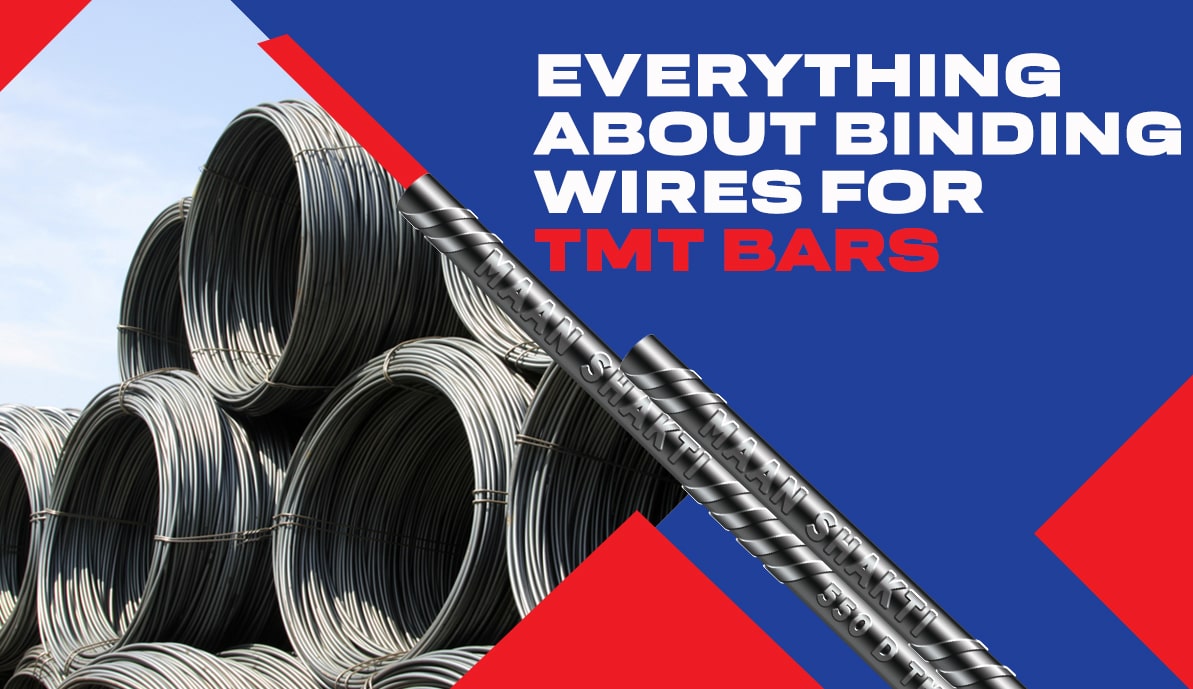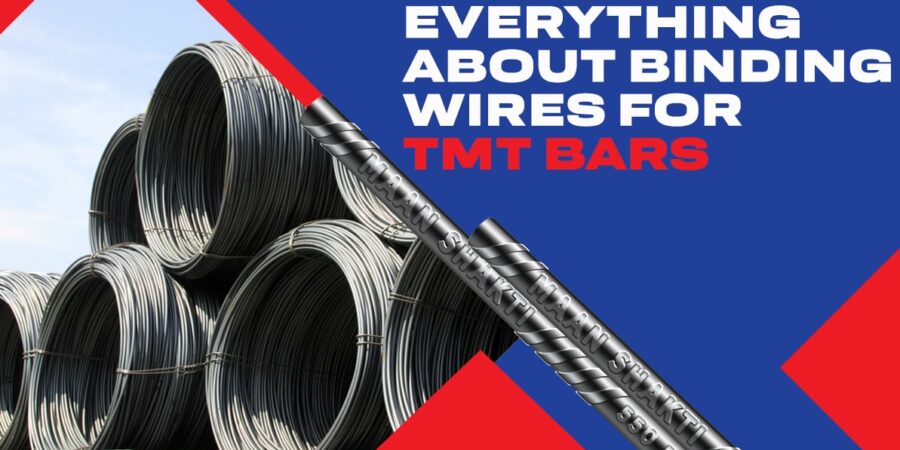If you’ve ever been involved in a construction business or simply admired a skyscraper, you’ve likely heard of TMT bars. These thermomechanically treated bars are the backbone of any construction project and provide strength and resilience. But behind every great TMT bar is a humble hero: the binding wire. Think of it as truly your trusted sidekick, which is the backbone of your operations. In this blog, you will learn the true value of a binding wire and how it helps keep a construction project strong and holds the different sections together.
What is Binding Wire?
Binding wire is a thin, flexible wire used to tie together TMT bars in reinforced cement concrete (RCC) structures. While the bars provide strength, the binding wire ensures that everything stays exactly where it should. In short, without binding wire, even the strongest TMT bars wouldn’t hold up the way they should.
So, think of binding wire as the organizer that ensures the muscle of TMT bars works effectively in building strong, durable structures.
Why Do We Need Binding Bars For TMT Bars?
You might be asking, “Why bother with binding wires if TMT bars are already so strong?” Well, without these wires, your TMT bars would be like a messy pile of sticks, disorganized and inefficient. Binding wires tie the bars together in perfect alignment and ensure they stay put during the concrete pour.
Imagine trying to build a sturdy structure without a way to hold the foundation in place. Binding wire keeps the best TMT bars locked into their proper positions, preventing any unwanted movement that could weaken the entire structure. It’s an essential part of making sure your building stands strong for years to come.
Types of Binding Wires
Not all binding wires are the same, just like how not all TMT bars come from top rated TMT steel bar manufacturers. There are different types of binding wires, each with its own strengths depending on the environment and construction needs.
- Galvanized Binding Wires: Coated with zinc to prevent rust, galvanized wire is ideal for environments exposed to moisture or humidity. It’s tough and long-lasting.
- Annealed Binding Wire: This wire has been heat-treated to make it more flexible and easier to work with. It’s a popular choice because of its balance between strength and pliability.
- PVC-Coated Binding Wire: For extra protection, PVC-coated wires are a great option. Resistant to corrosion, they offer an additional layer of durability in harsh environments.
How Does Binding Wire Impact Structural Stability?
Now that we know what binding wire is let us discuss how it impacts your construction project. Even the best TMT bars won’t perform at their peak without binding wire holding them together. When the TMT bars are bound correctly, they form a strong skeletal framework, ready to take on the weight and pressure of a structure.
The binding wire ensures the bars don’t shift or move during the crucial phase when concrete is poured. A minor shift in alignment could compromise the strength of the structure. Essentially, binding wire makes sure that everything stays in place, creating a secure foundation for the entire building.
Choosing The Right Binding Wire
When you are choosing the best TMT bars, you need a binding wire that can match their strength. Here’s what to look for when choosing binding wire for your project:
- Tensile Strength: Just like TMT bars, binding wires come with varying tensile strengths. It’s important to select a wire that can withstand the stress of construction.
- Corrosion Resistance: In areas prone to humidity or water exposure, corrosion-resistant wires like galvanized or PVC-coated options are essential to prevent rust.
- Flexibility: The wire needs to be flexible enough to wrap around TMT bars but strong enough to hold them in place. Annealed wire is often a good choice because it offers both flexibility and strength.
- Durability: Don’t cut corners on quality! Cheap or low-grade binding wire can weaken over time, compromising the integrity of the entire structure.
Fun Facts About Binding Wires
- Small But Mighty: Although it looks thin and insignificant, binding wire plays a critical role in construction, much like a strong glue holding everything together.
- Long Lifespan: High-quality binding wire can last for years, providing much-needed stability and support to structures.
- Comes in Rolls: Binding wire is typically sold in large rolls that seem never-ending. It may look like a small coil, but there’s a lot more wire there than meets the eye.
The Bottom Line
Binding wire may be the unsung hero of construction, but it’s no less essential than the best TMT bars. Together, they ensure your building stands strong, whether it’s a towering skyscraper or a cozy home. Choosing the right binding wire to complement your TMT bars, you’re not just investing in the present. You’re securing the future stability of your structure. The next time you hear someone talking about construction, don’t forget to give a nod to the binding wire holding it all together!


